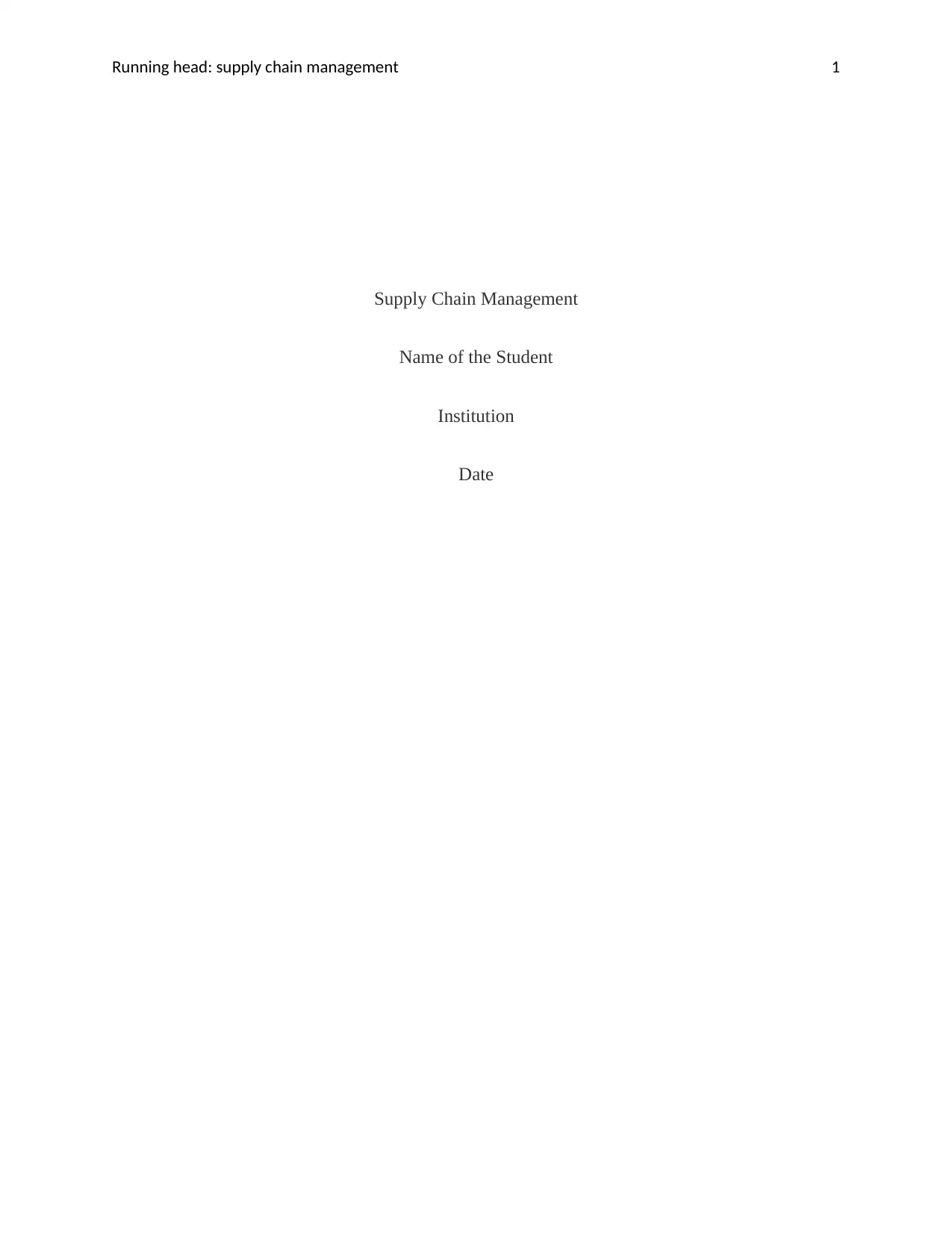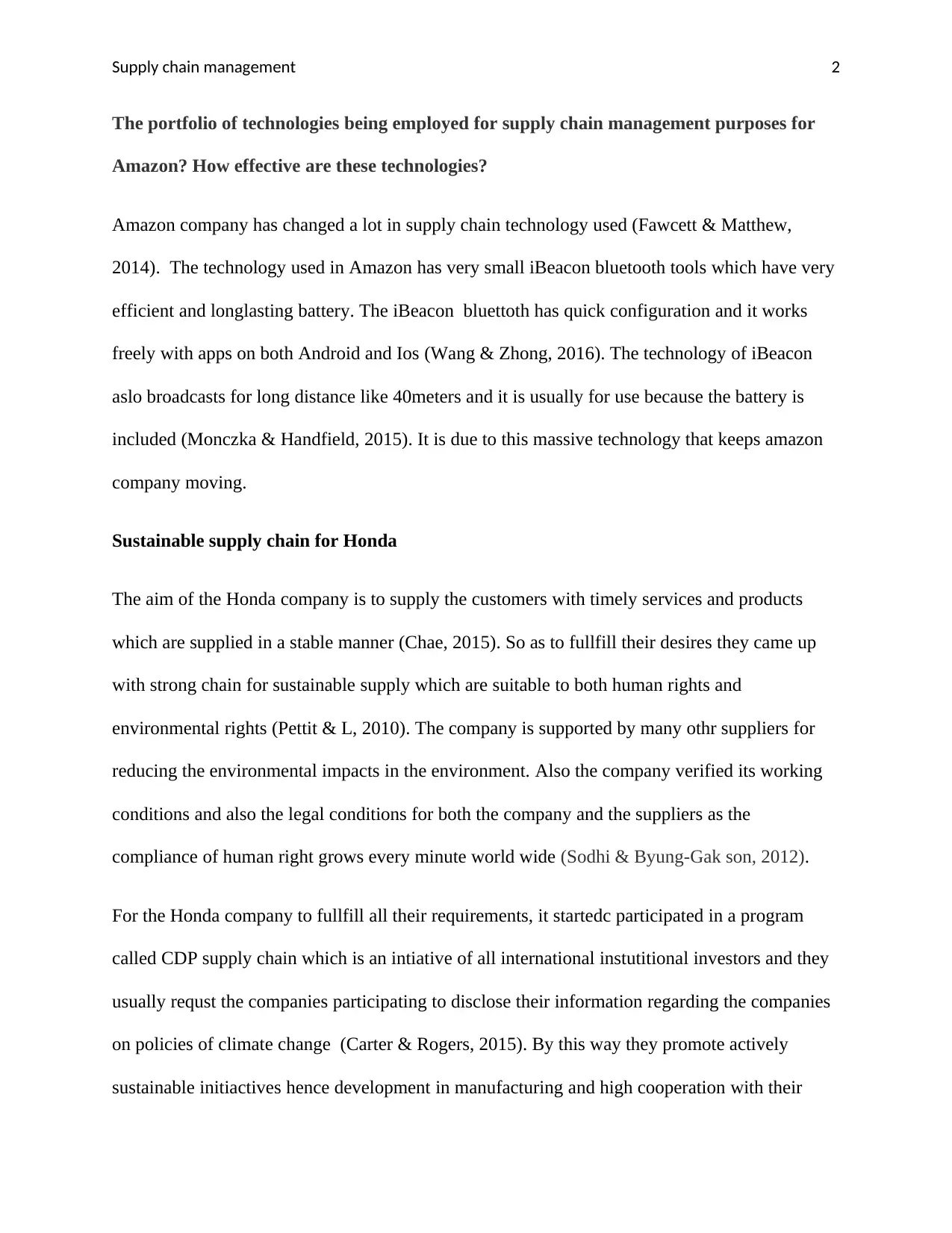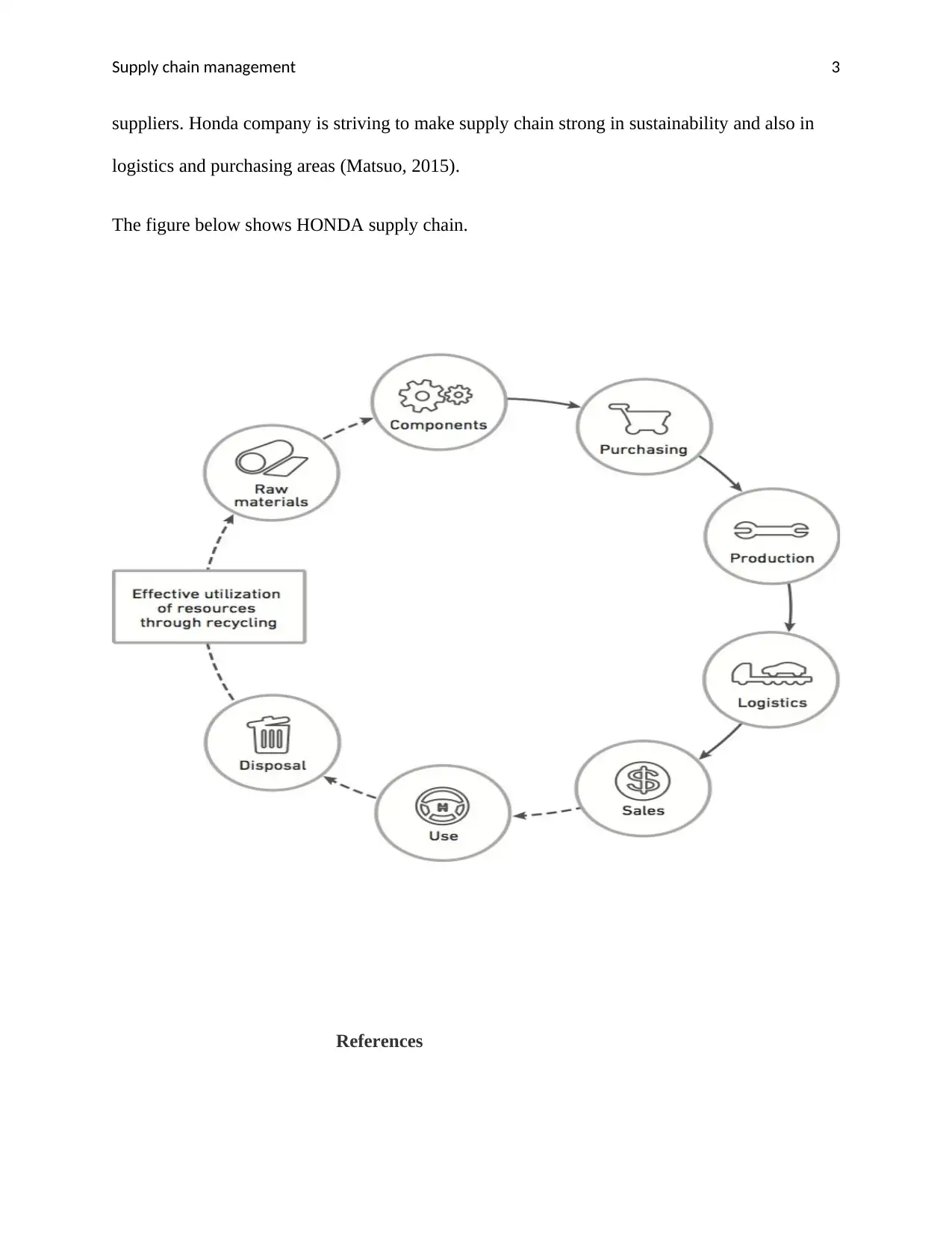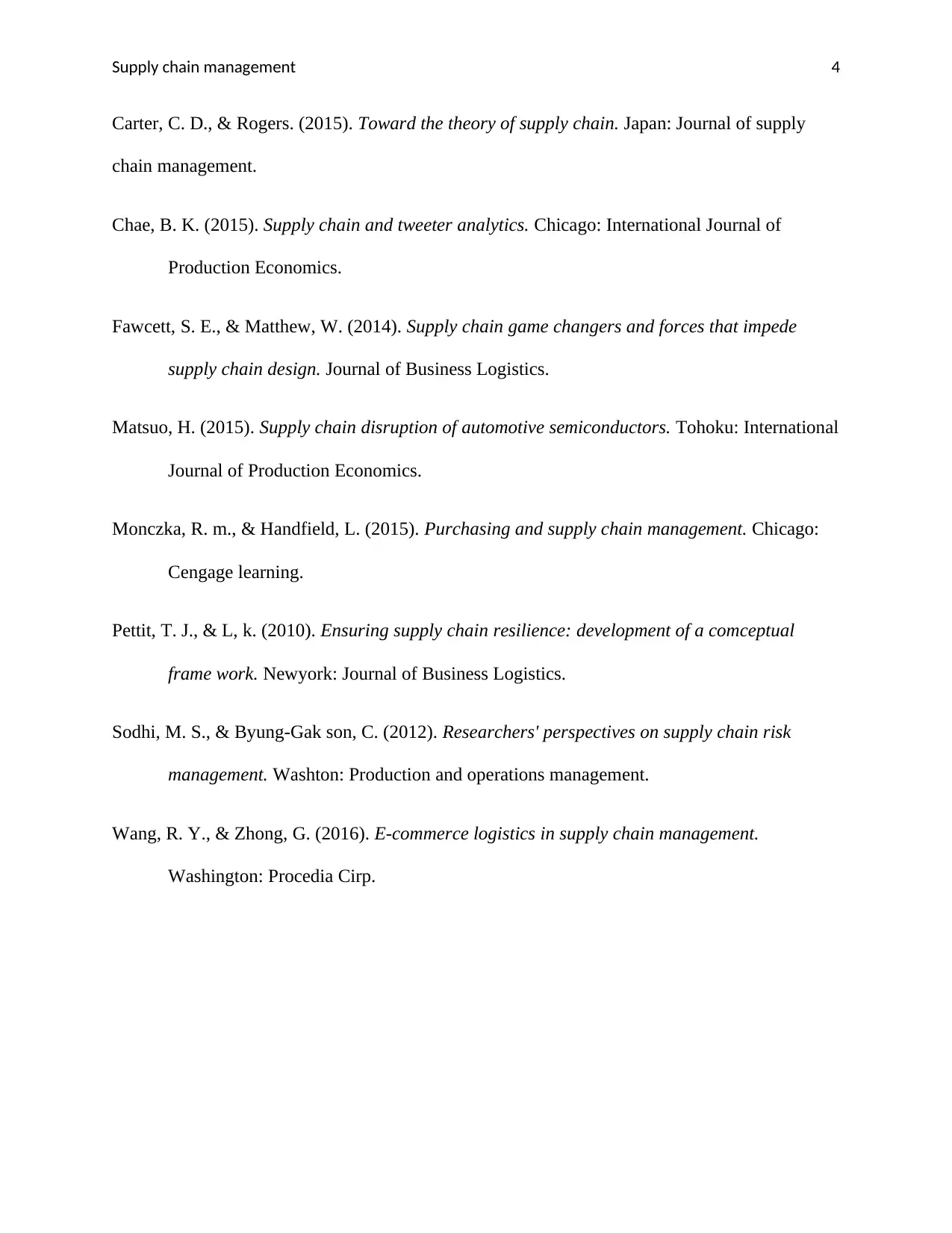Supply Chain Management Analysis Report: Amazon and Honda Case Study
VerifiedAdded on 2023/01/23
|4
|597
|77
Report
AI Summary
This report provides an analysis of supply chain management practices, focusing on two companies: Amazon and Honda. It begins by exploring Amazon's use of technologies, specifically mentioning iBeacon, and discusses their effectiveness. The report then shifts to Honda, examining their approach to sustainable supply chain management. It highlights Honda's commitment to environmental and human rights through their supply chain, including their participation in the CDP supply chain program. The report emphasizes Honda's efforts to improve sustainability, logistics, and purchasing within their supply chain. The report also references several academic sources to support its analysis of supply chain management concepts and strategies.
1 out of 4





![[object Object]](/_next/static/media/star-bottom.7253800d.svg)